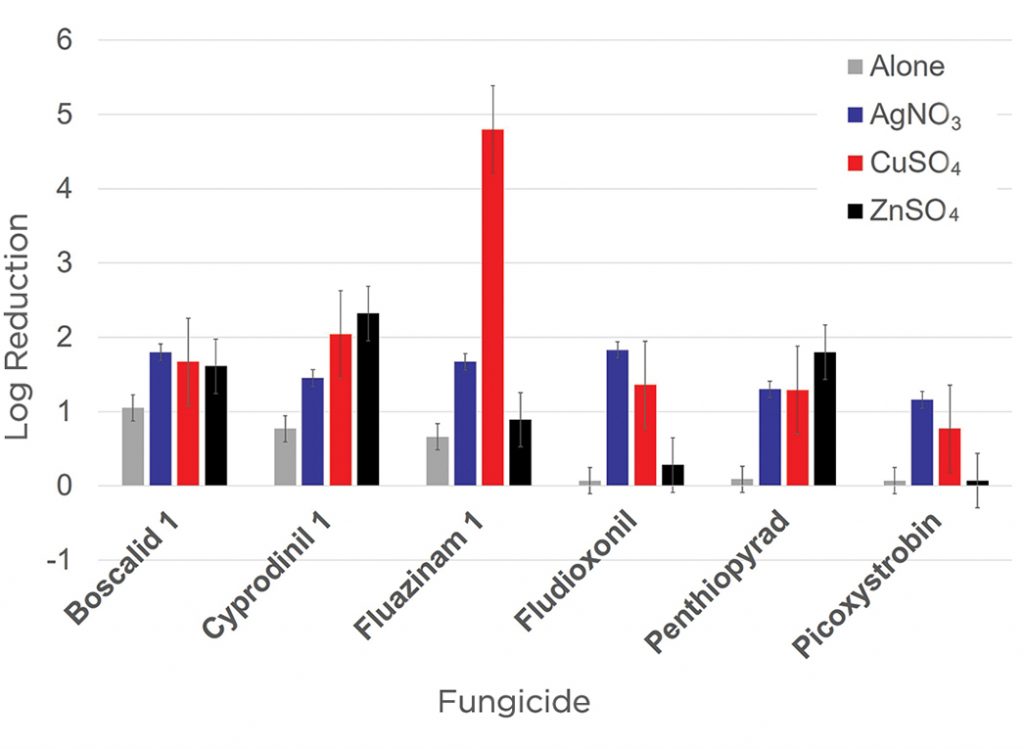Tests to improve Sclerotinia sclerotiorum control
KEY RESULT:
Heads Up, a resistance activator applied to seed, was found to enhance resistance against Sclerotinia sclerotiorum causing white mould in dry bean, but showed no benefit for canola. Adding a micronutrient to a foliar fungicide improved control of S. sclerotiorum for two of the six fungicides tested.
PROJECT TITLE, PRINCIPAL INVESTIGATOR:
“Improving Sclerotinia disease control in edible beans and canola,” Michael Harding, Alberta Agriculture and Forestry
FUNDING:
Alberta Crop Industry Development Fund (ACIDF)
Researchers continue to work to provide growers with a ‘heads up’ for sclerotinia stem rot in canola and white mould in dry bean, both caused by Sclerotinia sclerotiorum. While a foliar fungicide is an important tool for management of the pathogen, researchers continue to look for additional ways to improve disease control.
This project evaluated two ways to improve S. sclerotiorum disease control. The first was through improved fungicide control using a micronutrient tank mix partner. The second investigated activation or enhancement of host resistance with seed treatments. Both have been effective in research on crops other than canola and dry bean.
To investigate improved foliar fungicide control, six fungicides (boscalid, fluazinam, penthiopyrad, picoxystrobin, cyprodnyl, fludioxinil) and six micronutrients (silver, Ag; boron, B; calcium, Ca; copper, Cu; manganese, Mn; and zinc, Zn) were screened for synergistic interactions against S. sclerotiorum biofilms. (The term ‘biofilm’ means a microorganism growing attached to a surface, and often encased in a slimy, self-produced layer. Virtually all microorganisms (bacteria and fungi) grow as biofilms in natural environments, including agricultural environments.) Biofilm testing offers a high-throughput laboratory screening of fungicide effectiveness. This biofilm testing identified the most promising combinations from the 324 fungicide/trace element combinations.
Fluazinam activity was the most responsive to the micronutrient tank-mix in reducing S. sclerotiorum biofilms. For example, efficacy went from a 1-log
(90 per cent) reduction when the fungicide was used alone, to more than a 4-log (99.99 per cent) reduction when the copper compound CuSO4 was added. Fluazinam was also responsive to AgNO3. Cyprodinil was the next most responsive, and its activity was increased with AgNO3, CuSO4 and ZnSO4.
The top 10 combinations were used in field trials at two locations for white mold on dry bean (Brooks, AB and Lethbridge, AB), and two locations for stem rot on canola (Brooks, AB and Edmonton, AB from 2014 through 2016 (no canola data in 2015). While the effects of tank-mixing of some micronutrients with fungicides were easily measurable, and statistically significant, in laboratory testing, their efficacies in the field were often not discernible due to low disease pressure and other variables that could be controlled in the field. As a result, any consistent beneficial effect due to tank-mixing fungicides with micronutrients could not be confirmed in the field trials.
Field evaluations of the plant resistance activators were performed from 2013 through 2016 at the same locations (no canola data in 2013 and 2015). A bio-fungicide, Heads Up, was the best at reducing white mould in dry bean for three out of eight site years. Heads Up had the highest seed yield for dry bean in five of eight site year, and has rapidly become a standard treatment on all dry bean seed planted in Alberta. Unfortunately the effect was only observed on dry bean and not on canola. However, most of the canola work was done using seed already treated, which could have interfered with the resistance activators.
Figure 1. Do micros improve fungicide performance on sclerotinia?

Harding, M.; Nadworny, P.; Buziak, B.; Omar, A.; Daniels, G.; Feng, J., Improved Methods for Treatment of Phytopathogenic Biofilms: Metallic Compounds as Anti-Bacterial Coatings and Fungicide Tank-Mix Partners. Molecules 2019, 24, 2312.





